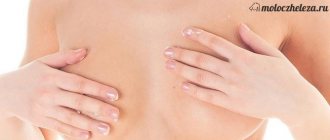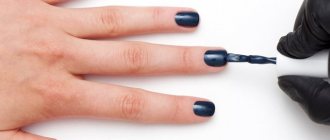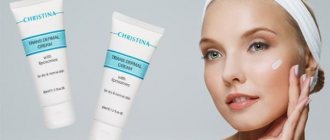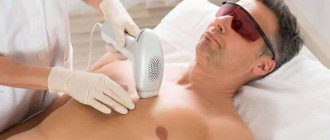Injection plastic surgery to combat local fat deposits and cellulite has recently become increasingly popular. A course of simple and painless procedures corrects volumes in problem areas that are not affected by physical activity or diets, and reduces the appearance of the orange peel effect.
The drug phosphatidylcholine is an excellent injection for weight loss; it is easily tolerated, does not cause complications and does not require rehabilitation after administration, allowing you to immediately return to your normal life.
Causes of fat deposits
Fat deposition and the appearance of cellulite are pathological changes in the human body. The reason for their formation is hormonal disorders and metabolic failures caused by internal and external factors. Among them: lack of physical activity, poor diet and fluid deficiency.
In these situations, fat cells (or adipocytes) begin to accumulate in large quantities, in reserve, and their structure changes. The cell membrane becomes denser, but its contents are not excreted. Such changes affect a person’s figure and health.
The use of phosphatidylcholine in sports
The main effect of this drug in sports is that during the training period it can improve blood supply to muscle fibers. Not everyone knows that excessively intense training stress contributes to the development of age-related atherosclerosis. These data have not been officially confirmed, but many experts are of this opinion.
This disease is expressed by a violation of the vascular system, which loses its elasticity and also contributes to the production of excess cholesterol. The pathology develops quite slowly; if the body experiences excessive physical stress, blood circulation may become difficult. Atherosclerotic vascular damage can also disrupt the blood supply to internal organs, stimulate the deterioration of metabolism, hormonal metabolism and negatively affect the condition of the human body as a whole.
It has been scientifically proven that phosphatidylcholine, when entering the body, inhibits and eliminates the negative manifestations of atherosclerosis. It normalizes blood flow in the muscles, stimulates their performance and promotes the removal of metabolic products, for example, lactic acid.
Of course, severe stress from the training process is covered by the use of vitamin complexes, beneficial microelements, carbohydrates and proteins (in moderation). Phosphatidylcholine transports some of the above substances into the body. This improves metabolism in the body and breaks down fats in the stomach.
The principle of action of phosphatidylcholine
Phosphatidylcholine is a natural enzyme present in the human body in cell membranes. The main purpose is participation in lipid metabolism. The substance is also found in plant crops, sunflower seeds, chicken egg yolk, and soybean crops. Based on the latter, preparations for cosmetic procedures are produced.
Phosphatidylcholine is a local lipolytic; it does not affect overall body weight, but corrects local problem areas with excess fat. Due to its chemical structure, it affects exclusively fat cells, activating the processes of their destruction, binding fatty acids and removing them from the patient’s body.
Action of phosphatidylcholine
The substance is usually used in combination with deoxycholate. The latter dissolves the membrane of fat cells and facilitates the penetration of active substances into it.
Description of phosphatidylcholine
Phosphatidylcholine is a phospholipid. It contains choline and some fatty acid. Phosphatidylcholine is found in the cell membrane, and the components of the drug are necessary to ensure the vital functions of the body. Choline maintains cellular structure and transports fat molecules into cells. Phosphatidylcholine promotes weight loss and improves neuromuscular signal transmission.
This useful compound has long been used in medicine and cosmetology. The drug is used to treat certain diseases: eczema, atopic dermatitis, etc. The compound is found in cosmetics that prevent skin aging.
One of the forms of release is gel capsules with phosphatidylcholine
Indications
Phosphatidylcholine is used to correct local fat deposits that are not amenable to other influences (physical activity, diet). According to the official instructions, it is used to work in the following problem areas:
- stomach;
- chin and neck;
- cheeks;
- buttocks;
- Hands;
- inner thighs.
If necessary, it can be used to work with other areas. Another indication for the procedure is the need to smooth out the relief of the skin after liposuction and fight cellulite.
The use of phosphatidylcholine in cosmetology
Preparations containing phosphatidylcholine are used to get rid of fat deposits in local areas. As a result, the volume of the interlayer is reduced by 5-10 centimeters. At the same time, the skin is evened out, stretch marks and the appearance of cellulite are removed. Basically, drugs containing phosphatidylcholine are used without combination with other lipolytics.
Injections are given subcutaneously. The depth depends on the place where the injection is made. On average, the solution is injected 1-3 centimeters. Before the session begins, areas that need to be treated are marked. Injections are given at intervals of two centimeters. During one procedure, only 0.5 milliliters of lipolytic is administered. This is necessary for uniform distribution of the substance. Injections are made in a zigzag pattern. Injections with phosphatidylcholine are given once monthly. The full course of therapy ranges from 6 to 20 sessions. The effect is visible after the first procedure. For faster results, you simultaneously follow a diet and add physical activity.
Turning to Science
Carrying out injections
Phosphatidylcholine is introduced into the dermis to a depth of 1 to 4 centimeters, depending on the location of the problem area. The injections are easily tolerated and do not cause discomfort and do not require prior anesthesia. Superficial or deep injection is a violation of safety precautions and leads to the development of complications.
The injections are carried out at a distance of two centimeters from each other, the injection sites are pre-marked by the cosmetologist using a special marker. It is not allowed to use more than 0.5 ml in one session. The procedures are carried out in a course of 5 to 15 sessions with breaks of 2 to 3 weeks. Changes are assessed after the first visit to a cosmetologist.
Contraindications
The use of phosphatidylcholine is allowed only if there are no contraindications to injection procedures and the drug itself. Among them are:
- individual intolerance to the substance;
- cholelithiasis;
- diabetes;
- pregnancy and lactation;
- pathologies of the liver, kidneys;
- internal infectious processes;
- soy allergy;
- violation of the integrity of the skin at the injection site;
- systemic connective tissue lesions.
Injections are not carried out into moles, lipomas and other benign formations due to the risk of degeneration.
Rehabilitation period: complications and recommendations
After injections of the drug, patients experience temporary side effects. Thus, swelling and redness of the skin is a normal reaction to external intervention and confirms the work of the lipolytic. Within 2 - 5 days they go away on their own, without treatment.
If a needle damages blood vessels, bruises or even spider veins may remain on the skin. In the latter case, to correct the side effect, it will be necessary to undergo a laser procedure.
Unfortunately, in addition to side effects, more serious complications, inflammatory processes or soft tissue necrosis, may occur. Their formation is associated with a violation of the technique of carrying out the procedure, introducing the drug into the deep areas of the dermis or muscle. If such complications occur, you must urgently contact a specialist to prescribe treatment.
Special recommendations for the rehabilitation period are usually not given; on the first day, it is not recommended to wet the injection sites or treat them with chemical compounds (creams, ointments). If necessary, the skin is treated with Miramistin or another gentle antiseptic drug. It is acceptable to perform light self-massage at home; it is believed that it enhances the results.
Positive effects
Memory and learning
PC increases the concentration of choline and acetylcholine in the brain. One human study found that 25 grams of PC, which contained 3.75 grams of choline, resulted in statistically significant improvements in learning.
Neuroprotection
PC is a major component of brain cell membranes. In a study on rats, one group was treated with phosphatidylcholine before and after administration of a chemical that leads to inflammation of the nervous system, while the other group was not. PC has been found to counteract the reduction in hippocampal neurogenesis by reducing the concentration of TNF-α (tumor necrosis factor). TNF-α is one of the main factors influencing inflammation.
Neurogenesis
Phosphatidylcholine helps repair damaged brain cells. By making them more fluid and permeable, they ensure the proper flow of chemicals and nutrients.
Liver
Non-alcoholic fatty liver disease (NAFLD) is a very common disease characterized by the accumulation of fat in the liver. Unfortunately, there are no good treatments, and those diagnosed must make lifestyle changes to slow the progression of the disease. Supplementation with phosphatidylcholine for 12 months improves liver enzymes and histology.
Fat Loss
Subcutaneous injections of phosphatidylcholine are used to reduce subcutaneous fat.
Anti-inflammatory effect
During a clinical trial of the effect of PC on inflammatory activity caused by ulcerative colitis, a marked reduction in inflammation was found in subjects.
Cardiovascular diseases
One study examined the effects of daily PC supplementation for 2 weeks on homocysteine concentrations in healthy men. High homocysteine concentrations are associated with cardiovascular disease. In this study, it was found that supplementation with 2.6 g/day of choline in the form of PC resulted in a decrease in homocysteine levels.
Photos before and after
Photos before and after No. 1
Photos before and after No. 2
Photos before and after No. 3
Price
Phosphatidylcholine is used as part of meso-cocktails for mesotherapy. The average cost of one session is 1500 - 2500 rubles; to achieve pronounced changes, at least 5 - 7 procedures will be required with breaks of 2 to 3 weeks.
The cost of one ampoule of the drug is 300 - 400 rubles and depends on the manufacturer. If necessary, it can be injected in its pure form, in which case the cost of the procedure will start from 1000 rubles and directly depend on the amount of product used.
Rehabilitation period after the procedure
After the procedure with phosphatidylcholine, it is recommended to drink half a liter of pure water (without gases). During the day, you need to massage the treated area several times for thirty minutes. This is done to prevent the formation of capsules with phosphatidylcholine. To avoid complications after the procedure, the skin is treated with cold water and wiped with a sanitary napkin. Temporarily (at least a couple of weeks) visiting saunas, baths, solariums and sunbathing is prohibited.









